Weed(s) Wars
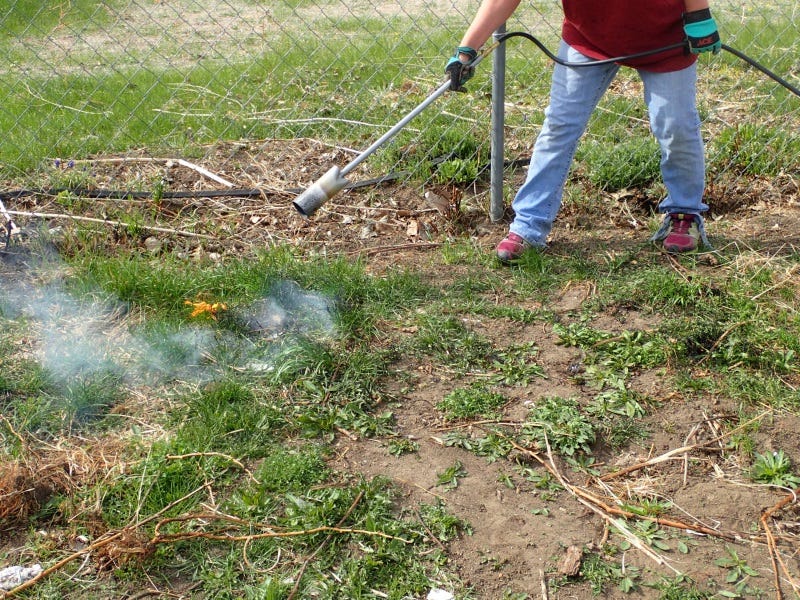
The spring garden is weed-free and full of promise. Every year I strive to keep the unwanted plants at bay valiant efforts and consistent care. Then hiking season happens and the weeds take over unless I am smart enough to employ techniques to stay one step ahead of them.
There are few things more likely to make a gardener throw up his or her hands in frustration than weeds. They seem to reproduce exponentially overnight, choking out the vegetables or covering your flowers to where you can’t even see them. Fortunately, there are also a variety of ways to stay ahead of them.
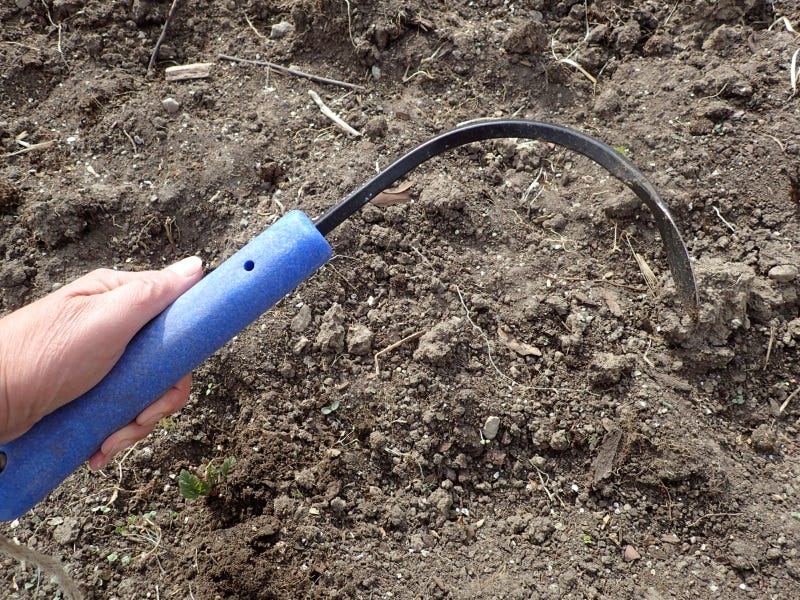 Cobrahead is the champion weeding tool.
Cobrahead is the champion weeding tool.Nip them before the grow
If you have only plants in your garden, either established perennials, annual flowers, or vegetables, use a pre-emergent, such as Preen, to reduce the growth of weed seeds in the soil by forming a bond in the soil that doesn’t allow the roots of the new plants to take hold. This is why it works great around already growing plants, but is not a good idea to use where you’re going to seed lettuce or other vegetables.
Knock ‘em out when they’re little
It sounds brutal, but you have to target the younglings. If you do have time in the spring to go through your garden with a tiller or stirrup hoe, you can eliminate a fair amount of the weeds that are just germinating. This is particularly useful when you remove the weeds the closest to the plants to minimize competition for water and nutrients. Some of the best tools to use are stirrup hoes, which, not surprisingly, look like a stirrup that scrapes the top of the soil, as well as the Cobrahead hand weeder. This wicked looking tool can pull long dandelion tap roots, as well as scratch away the tiny seedlings.
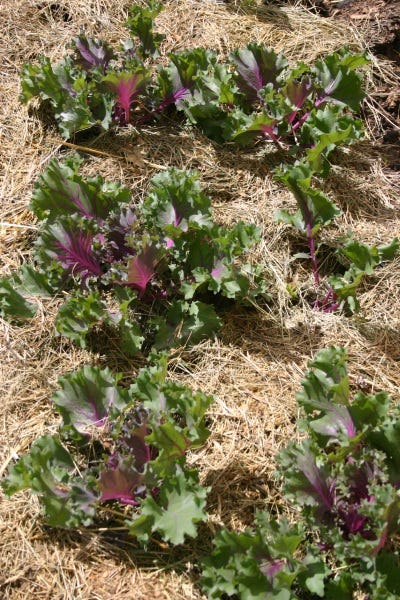 Straw mulch around kale plants help keep down the weeds.
Straw mulch around kale plants help keep down the weeds.Smother weeds with mulch
One of the best ways to keep pathways clear, especially if you are not going to till throughout summer, is to put down 6-8 layers of newspaper and top it with either a layer of straw or several inches of grass clippings that you know are free of herbicides or pesticides. The newspaper (it’s good to note that the glossy paper is not to be used) breaks down by the end of the season, but in the meantime does a decent job of preventing weeds from coming through. If some do germinate, they are very easy to pull. In flower beds, using a shredded bark mulch or bagged compost/mulch, such as Glacier Gold from Olney, Montana, also helps keep some weeds from growing very well.
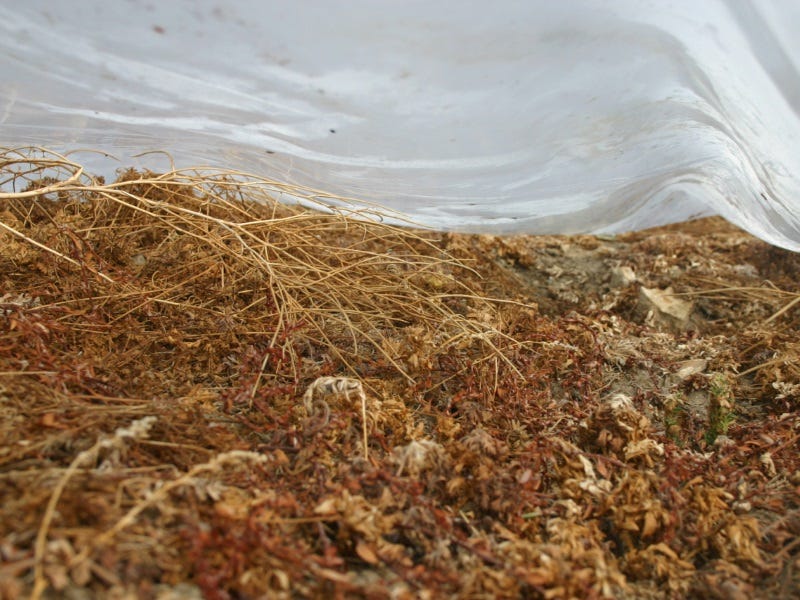 Many weeds are easily killed under plastic.
Many weeds are easily killed under plastic.Use a plastic mulch
Along the same thought of smothering out weeds under a mulch, black plastic is another option for vegetable gardeners who don’t have time to weed between all of the plants throughout summer. When you’re planting, set down irrigation, stretch out the black plastic, cut a hole where each plant goes, and plant the transplants. Not only does this method reduce weeds (although you might have one pop up through the holes on occasion), it reduces evaporation, and warms the soil for those heat-loving veggies.
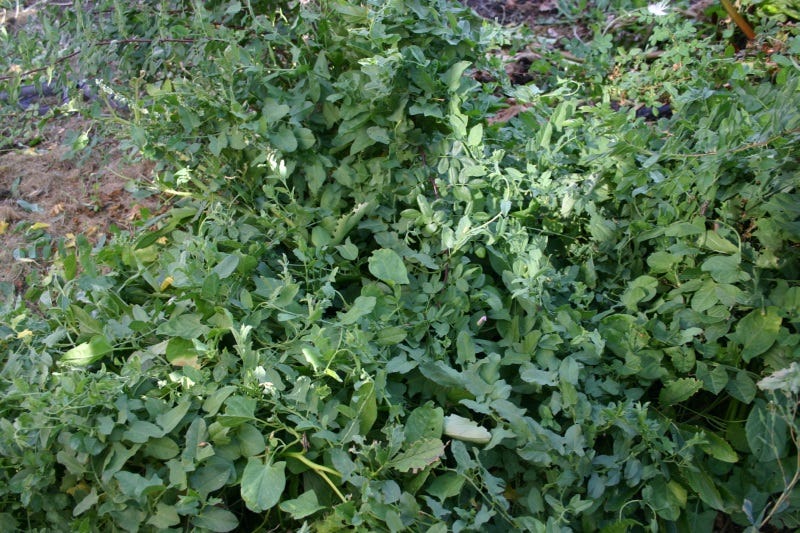 Bindweed takes over anything around it. It's best to weed it from the early spring and never let it gain a hold.
Bindweed takes over anything around it. It's best to weed it from the early spring and never let it gain a hold.Build a lasagna garden
Keeping the soil structure in place is undoubtedly a healthy option for a productive garden. And, it’s a good way to stay on top of weeds because you can control what is used in your layers of natural materials and create a raised garden that is a terrific for vegetables. Begin creating your layers with newspaper or cardboard as the base layer on the ground and alternate with carbon based items (straw, newspaper, mulched leaves) with green matter (kitchen scraps, spray-free grass clippings, or weeds that are not going to seed). You can stack this from a foot to two feet tall and allow to compost for 6 months. Once you plant in it, any weeds that have the audacity to spring forth from this nutrient rich combination are easy to pull, and can be added back onto the pile to add even more organic matter.
Boiling them away
For very tough weeds or grass you simply can’t gain a hold on, such as in the cracks of walkways or along fence lines, use boiling water to knock back their growth, and if applied frequently enough, will actually kill them. Be careful in this process since it can burn you, as well as the weeds or grass. Using a tea kettle, bring the water to a boil, then simply pour it over the offending plants. Avoid splashing the hot water on nearby plants because it will burn them, as well.
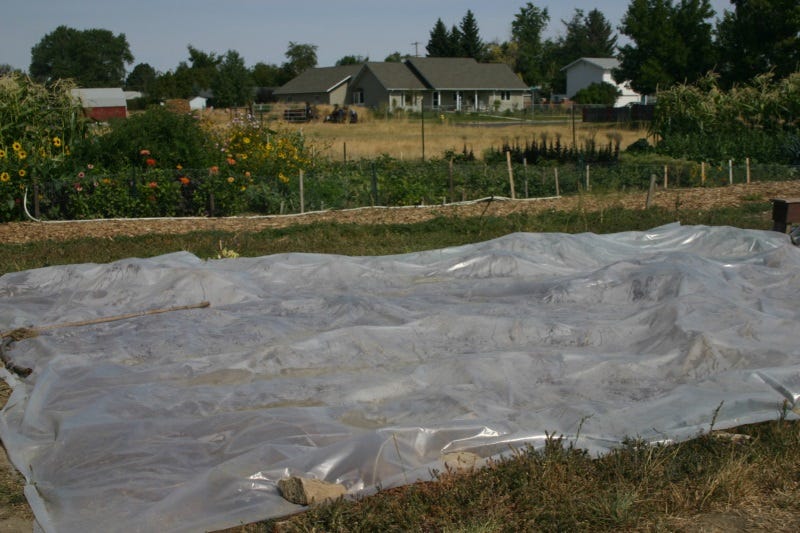 The entire plot in a community garden went to the weeds, so we pulled a sheet of plastic over it to cook them all out.
The entire plot in a community garden went to the weeds, so we pulled a sheet of plastic over it to cook them all out.Use the sun to knock them out
Sometimes the weeds take such a hold that there is little you can do except start over. In this case, a chemical free option is solarizing the area by covering it with clear plastic, which heats up hotter than black plastic. At any time of the season, pull the plastic over the area and tightly secure it with either landscape staples, rocks, or heavy boards. The goal is to create a snug, heat-holding cover over the area. Solarizing weeds quickly knocks out annual weeds, and with time (up to several seasons for some weeds such as bindweed) can even eliminate some of the worst offenders.
 Flame weeding the grass.
Flame weeding the grass.Bring out the flame weeder
If you don’t want to spend time on your hands and knees pulling weeds, fire up the propane powered flame weeder to singe them into non-existence. When eliminating weeds with the flame weeder, the focus is to heat the plants to the point where there is cellular failure in the foliage, and not necessarily burning them because they will simply grow back from the roots. Lightly go back and forth until the weeds wilt, then move on to the next section.
Resorting to chemicals
If you can’t stand it anymore and have to resort to chemical means to eliminate weeds, be sure to do it correctly. Learn what chemical control is best for the job by talking to your extension agent, and apply according to the instructions. For many, the time of year, as well as specific conditions, are critical for success. For instance, thistle and Russian knapweed will simply laugh if you try to knock it out in the spring. Their roots are so deep that they are best sprayed in the fall when they are more likely to take up the poison before going into winter dormancy.
In addition, most herbicides are most effective when the plants are actively growing. Water the area the day before if it’s been dry, and spray when it is warm with no wind since the last thing you want is to inadvertently kill your other plants.
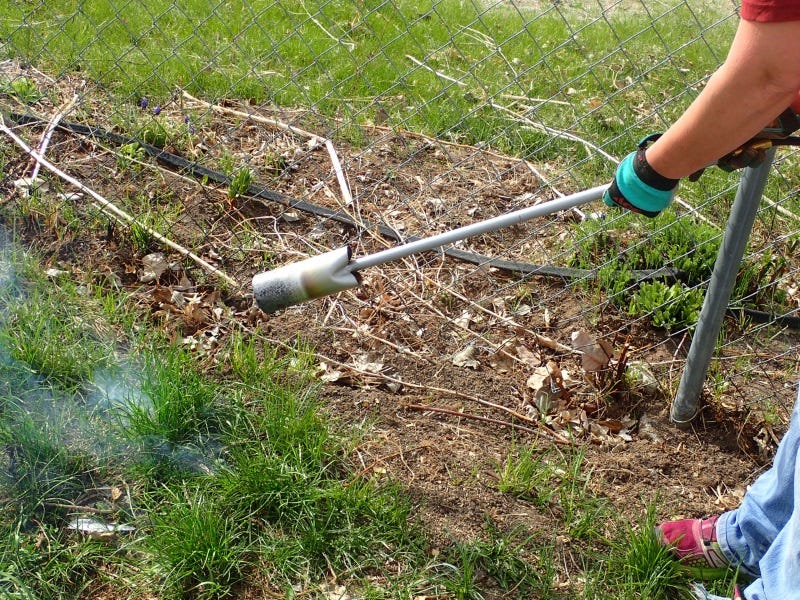 Flame weeding the grass
Flame weeding the grassDon’t give up
There isn’t a magic bullet when it comes to winning the weed wars. Depending on your garden situation, your patience, and your tenacity, pick the method and the tools that work the best for your job.
